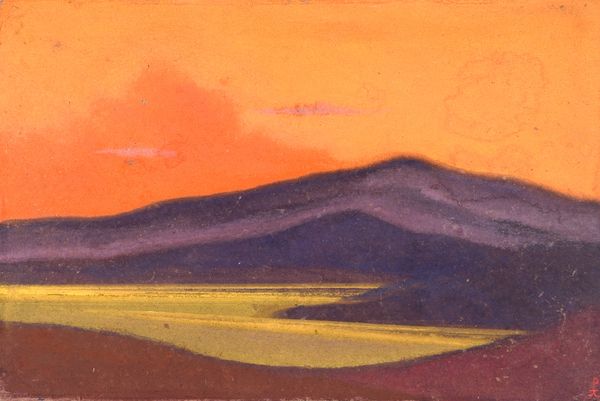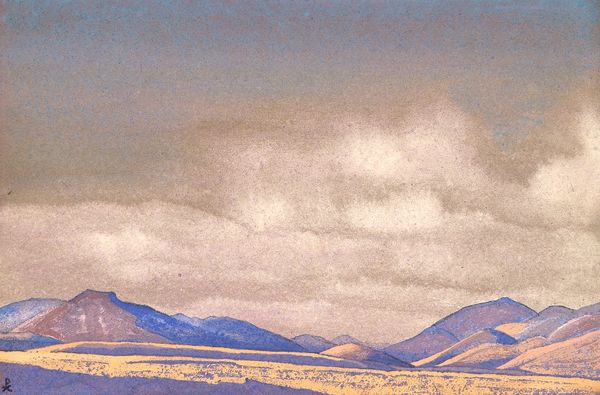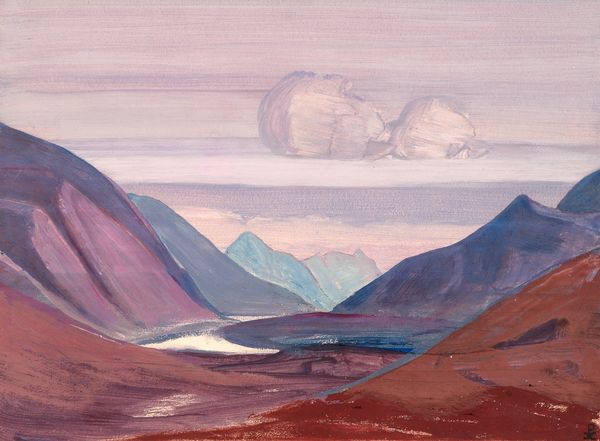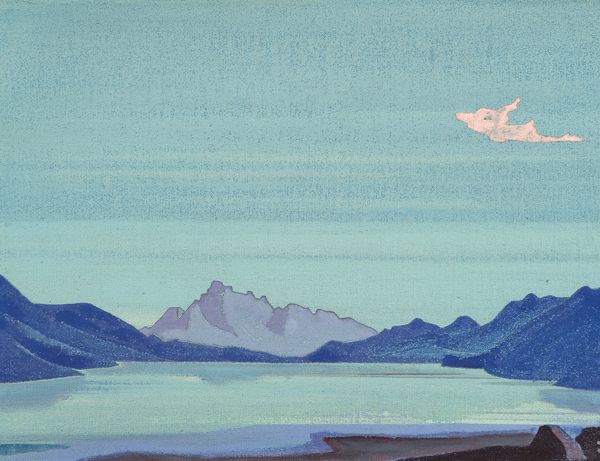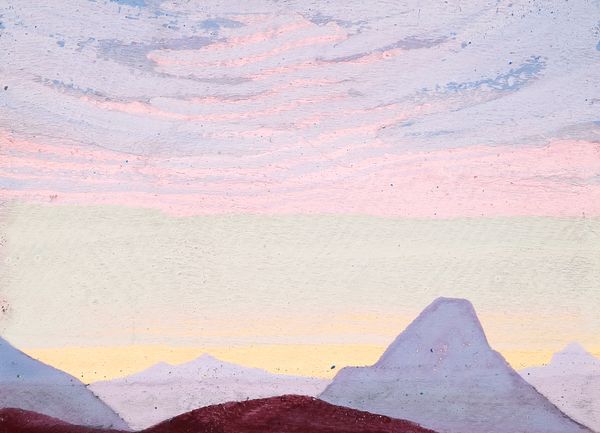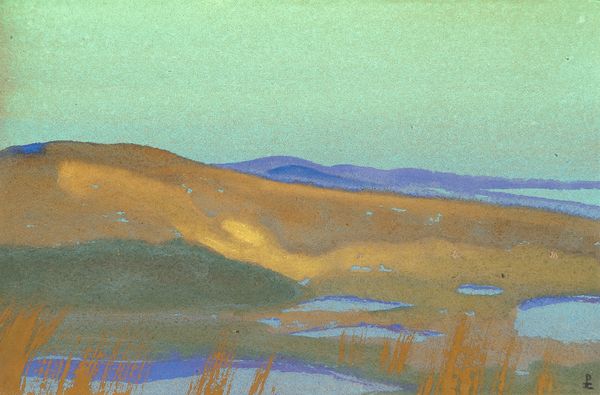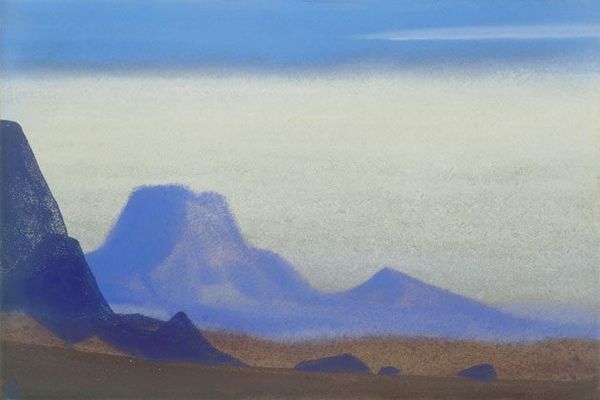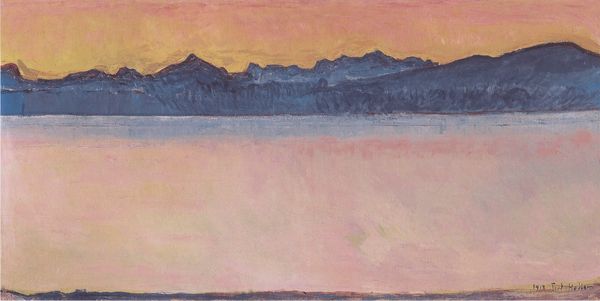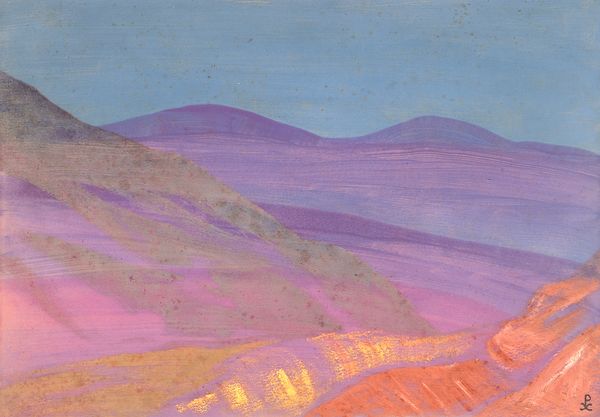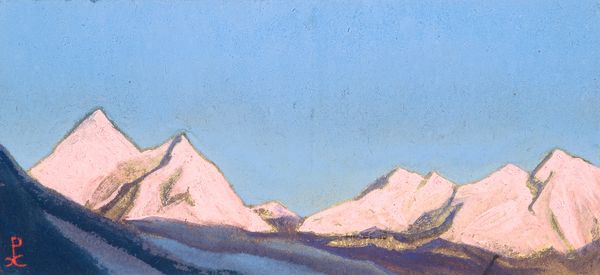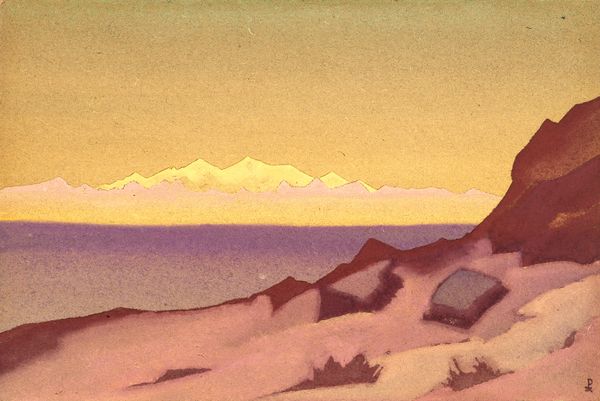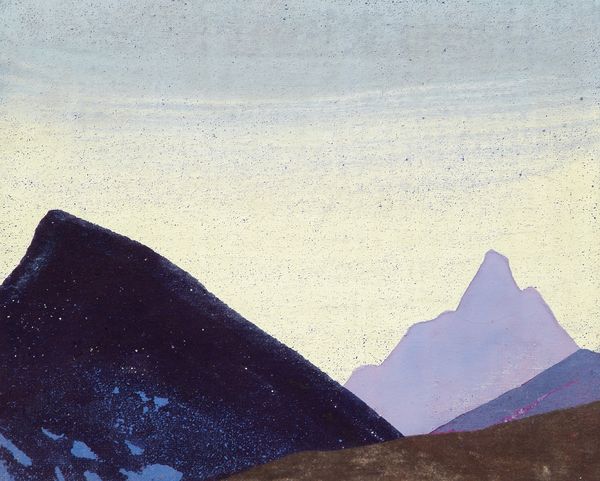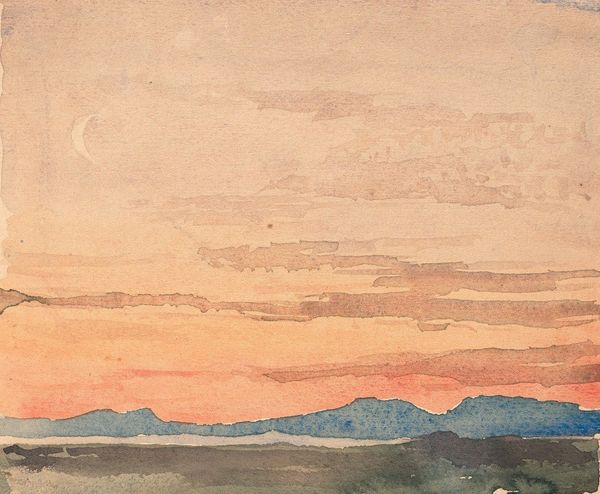
watercolor
#
water colours
#
landscape
#
oil painting
#
watercolor
#
mountain
#
watercolor
#
realism
Copyright: Public domain
Editor: Here we have Nicholas Roerich's "Study of Mountains" from 1931, a watercolor painting that evokes a serene yet almost mystical atmosphere. The cool blues and purples give the mountains a distant, ethereal quality. What layers do you see at play within this deceptively simple composition? Curator: Well, the serenity is intentional, I think, but it is also deeply intertwined with Roerich's complex socio-political agenda. Think about the time, 1931; this wasn't simply landscape painting, but an invocation of a spiritual homeland, an imagined, unified, and peaceful Asia amid growing global tensions. Theosophy and his own spiritual quest played into his art, using landscape as a symbol. What effect do you think this approach had on its reception and meaning at the time? Editor: So, it's not just a pretty picture, but a statement? Were audiences aware of this agenda or did they mostly perceive the aesthetic beauty? Curator: Exactly. It was definitely both. While some viewers may have appreciated its apparent simplicity and beauty, others would have seen, or even suspected, the underlying political and spiritual dimensions, particularly his push for a "pact of peace" to protect cultural sites during conflict. His focus on mountainous regions is key too. What cultural associations do mountains have and how could that be tied to intersectional identities that have been marginalized or uplifted in times of upheaval? Editor: Mountains as symbols of strength, refuge, but also, sometimes, inaccessibility. I hadn't really thought of the socio-political implications. So Roerich was subtly, or not so subtly, embedding a message within this landscape. Curator: Precisely. The colors, the composition, they all contribute to this layered meaning. Understanding the socio-political and spiritual context surrounding the art allows a deeper appreciation. It compels us to contemplate landscape art and our present climate crisis from an activist standpoint. Editor: I'll never see a landscape the same way again! This really opened my eyes to considering a broader cultural framework when looking at any artwork. Curator: And that is precisely the point. Art isn't created in a vacuum. It is embedded with cultural cues that shape our perception and engagement with both our present and our past.
Comments
No comments
Be the first to comment and join the conversation on the ultimate creative platform.
